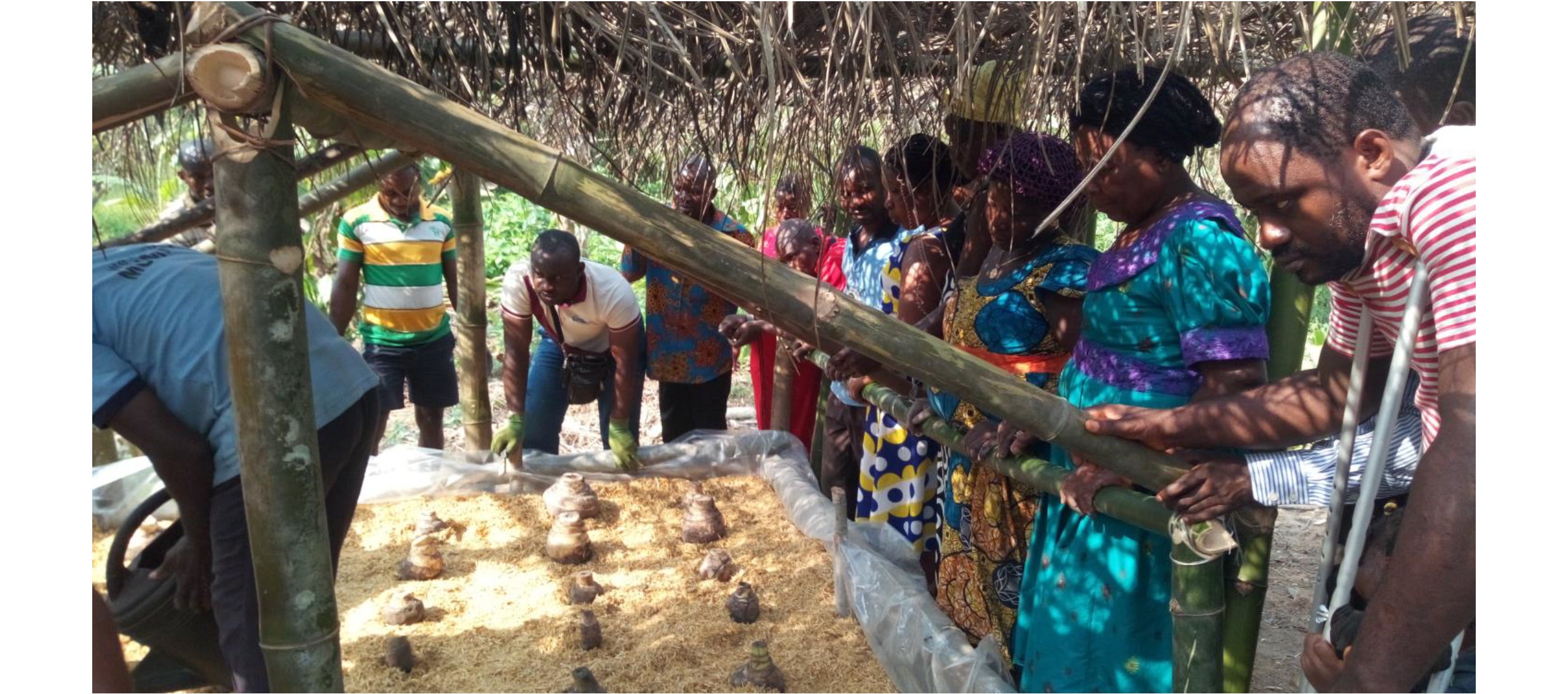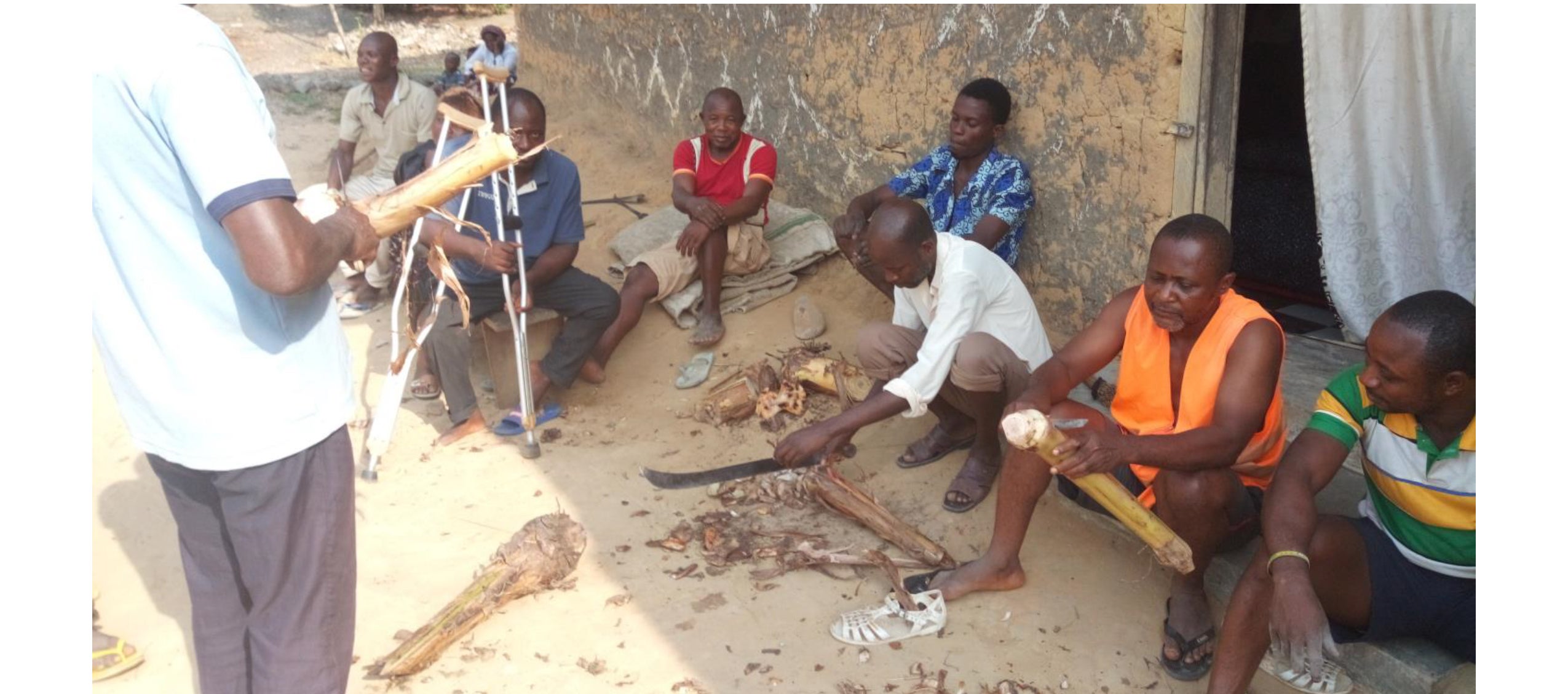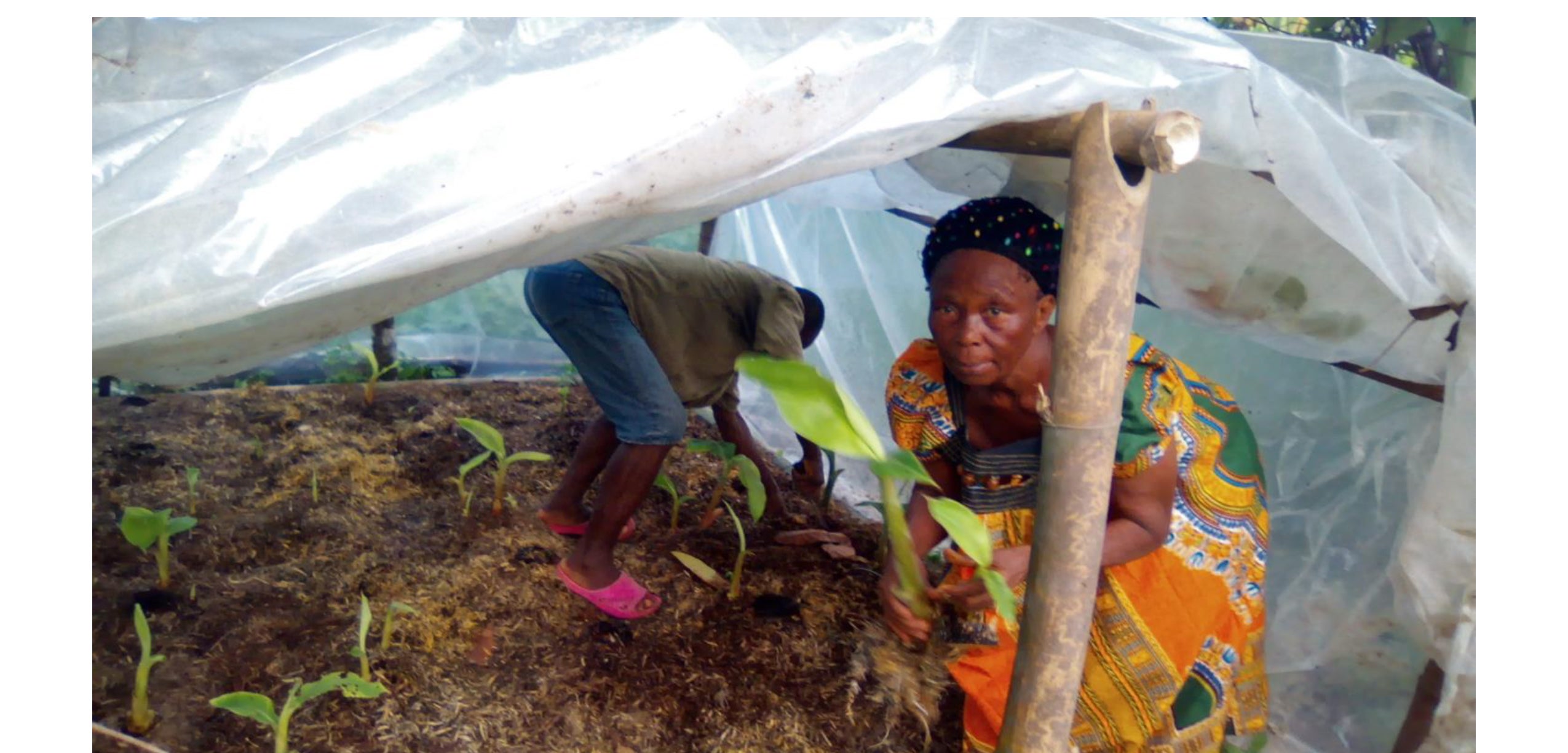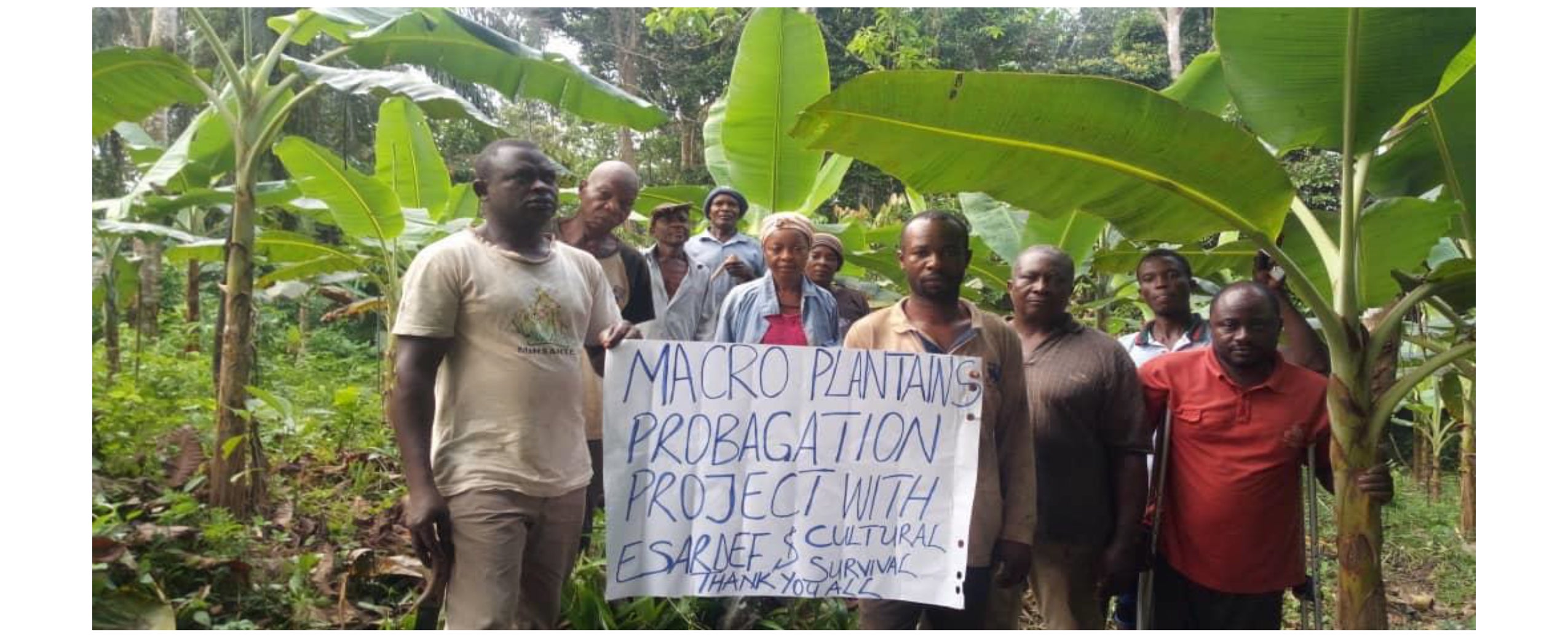
The advancement in retention and fortification strategies for the conservation of cultural practices, community structures, and specific environmental practices by Indigenous communities can be seen everywhere. The Education for Sustainable and Rural Development Foundation (ESARDEF) is working tirelessly through capacity building efforts in communities throughout the South West, North West, Eastern and Western Regions of Cameroon to increase access to resources through formal education in schools and vocational training, and through informal educational programs in health, agriculture, environment, and human rights. With a special focus on capacity-building, ESARDEF is constantly thinking about what they can do today to improve the futures of their communities.

Treatments and placements of high breed ‘‘ndum ehore’’ (plantain) suckers into the propagator
Cameroon experienced food sufficiency for more than 20 years, but with the worsening of climate change, crop yields have not been as fruitful as they used to. More people everyday are relying on imports for basic food supplies and rising levels of poverty can also be seen. Coffee, cocoa, and plantains were key exports. In 2009, the Ejahru community, specifically, experienced a very serious drought that affected plantain yields. People started relocating to other communities where the endangered ndum ehore plantain could be obtained, and reintroduced in the community, as well as replanted in their farms.
After a yam multiplication effort was successful in a nearby community, the Ejahru community started looking for ways to do the same with the plantain. Since then reintroduction of plantain yields has been slow moving. There is still a dependence on natural regeneration of plantains in the community, which usually produces small amounts of planting material that are likely to be contaminated with soil-borne pathogens such as nematodes. To overcome this constraint, macro production of the ndum ehore plantains remains the best option to restore the cultural and livelihood benefits of the plant.

Placement of the ndum ehore suckers into one of the propagators by the agronomist
Through a grant from the Keepers of the Earth Fund, ESARDEF has revitalized the spiritual beliefs of the Ejahru community through the macropropagation of plantains for the restoration of the sacred ekpe meal and brotherhood which remains the highest traditional institution that maintains peace, order, and social inclusion in the entire community. The ekpe meal is sacred amongst the Ejahru because it is believed that those who cultivate, prepare, and eat this meal, especially during ceremonies and festivities, are an embodiment of peace and unity. However, due to the plantain’s scarcity, before this grant cycle, the ekpe meals during ceremonies and festivities were adulterated and locals who made their earnings from its cultivation were adversely affected. The gradual decline of this meal put families, who earned income from the plantain cultivation, in a gradual state of hunger, malnutrition and poverty, affecting children’s health and access to education.

Separating the first high breeds ndum ehore suckers’ plantlets from the combs in the Propagator into filled polythene bags by women.
A large effort for community mobilization was seen during the construction of the propagator. Women are mostly responsible for cultivating the crop especially due to spiritual beliefs attached to it and have constituted over 55% of the project beneficiaries. Their skills have improved as they have conducted treatments and placements of high breed ndum ehore (plantain) suckers into the propagator, and separated the first high breed ndum ehore suckers’ plantlets from the combs in the propagator into filled polythene bags. They then place the plantain suckers in the nurseries for nurturing and watering. Elimbie Eno, an ESARDEF participant, said that he felt a “kind of relief that this project is capable of restoring some of our traditional seeds and plantlets.”
Seeing earnings from the sales of the ndum ehore plantain will require further monitoring-- an estimated observation period of 12 months-- to understand the strengths and weaknesses of the plantlets and then make them available for sale to other plantain farmers. Yet, beneficiaries like Ojong Achalle, are quick to say with a wide smile, that “It is a wonderful project as it can be foreseen that it will generate income for those who will sell the plantlets from their nurseries like me.” The community has a lot of hope and excitement for the next 12 months. Ayamba Oru, the Project Dean stated, “We thank Cultural Survival and Mr. Etang [founder of ESARDEF] for seeing the need, and taking the bold step to conserve our cultural heritage. It is our desire to see this project continue.” For ESARDEF, this year-long project was just the beginning of a capacity-building initiative that will have generational benefits because more and more members are learning how to get involved in Indigenous knowledge transfer and revitalization of their traditions.



